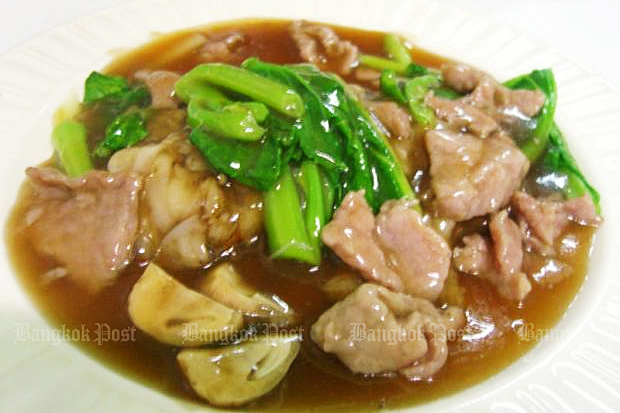Showing 1 - 10 of 18
The reverent relationship of man and beast
Life, Suthon Sukphisit, Published on 17/08/2020
» In the old days, farmers considered buffaloes their best friends and they were deeply bonded. The animals were not just powerful, but were also very reliable helpers in rice fields. Nowadays, we rarely see the beasts working in the fields because they have been replaced by machines.
Sweet success
B Magazine, Suthon Sukphisit, Published on 21/07/2019
» Sugar is indispensable to Thai cuisine. Granular sugar is widely used in the present day but sugars made from sugar palm or coconut trees or sugarcane are still as suitable for traditional Thai dishes and sweets as ever.
Don't have a cow, man
B Magazine, Suthon Sukphisit, Published on 06/01/2019
» Today, people aren't eating as much beef as they used to. There are many reasons for this. Some feel cows are noble creatures that help and live with farmers, and it would be a pity to eat them. Some feel that beef is too expensive, up to twice the price of pork or three times the price of chicken. It's tougher to chew and digest. If you worship Ganesh or Guan Yin, it's a sin to eat beef.
'Pad kaprao' still on top
B Magazine, Suthon Sukphisit, Published on 29/07/2018
» At times, one cannot help but appreciate the most minute details of a huge news story, such as the boys from the Wild Boars football team saying after their cave ordeal that they just wanted to eat some pad kaprao.
The rise of venison
B Magazine, Suthon Sukphisit, Published on 26/11/2017
» Beef used to be the most commonly consumed meat in Thailand. Its popularity faded away due to the changing preferences of modern consumers. Some would simply say that beef is getting more expensive, so they switched to pork and chicken instead.
It takes a village
B Magazine, Suthon Sukphisit, Published on 27/11/2016
» His Majesty the King's philosophy of the sufficiency economy, which he always promoted among Thai people, depends on diligent work and the avoidance of greed and cheating or dishonesty. The rewards of this approach to life include a comfortable life and -- importantly -- the avoidance of debt.
The old and the new
B Magazine, Suthon Sukphisit, Published on 24/01/2016
» When you read old Thai cookbooks, you will find certain very specific descriptive words often appear with the instructions on how to prepare a dish. These can be very interesting, as they give an insight into how cooks of the past chose the ingredients and techniques that would ensure the dish would turn out at its best.
Bird is the word
B Magazine, Suthon Sukphisit, Published on 08/11/2015
» I probably sound like I’m bragging or exaggerating when I say Thailand is home to the greatest variety of grilled chicken in the world. Be that as it may, there are reasons why chicken cooked this way has been such an important part of Thai cooking and over the centuries spawned countless variants.
On the origin of dishes
B Magazine, Suthon Sukphisit, Published on 04/10/2015
» You have to sympathise with the confusion a foreigner may feel when encountering Thai food on its native turf, especially in Bangkok. The visitor may have conflicting feelings; thinking that he knows something about what he sees, but also suspecting that he doesn’t. For instance, if the tourist comes across a southern curry and rice shop he will recognise it easily enough because every southern curry shop has a sign saying that it is a southern food shop, and often mentions the province the owners come from. Even if the sign is written in Thai and the visitor can’t read it, someone nearby might explain.
Northern soul
B Magazine, Suthon Sukphisit, Published on 01/03/2015
» Thai cookbooks have evolved over the years. The first one that we know about, published in 1908, was written by Thanphuying Plien Phaasakonwong, and was called Mae Khrua Hua Paa (archaic Thai for “The Cook”). Besides being a skilled cook, Thanphuying Plien was an avid collector of recipes from various sources. In her book she gave measurements, a practice that was considered modern because cooks had previously relied on personal expertise in deciding how much of a given ingredient was to be used, rather than systemised measurements.










